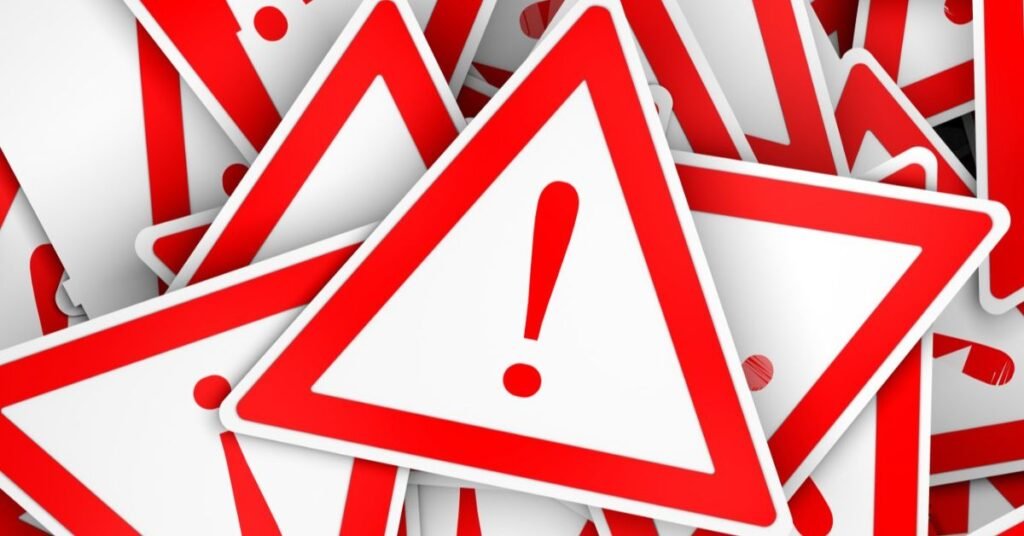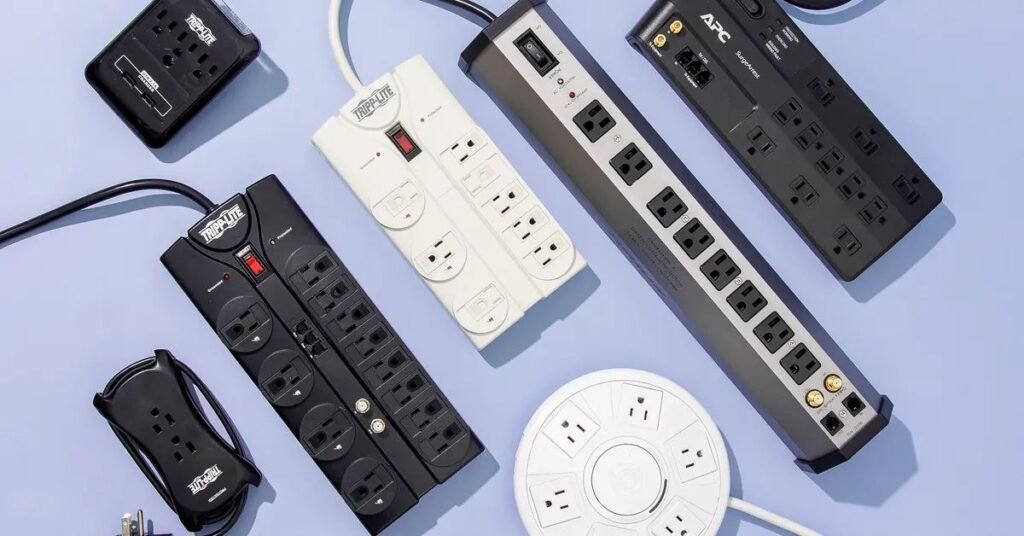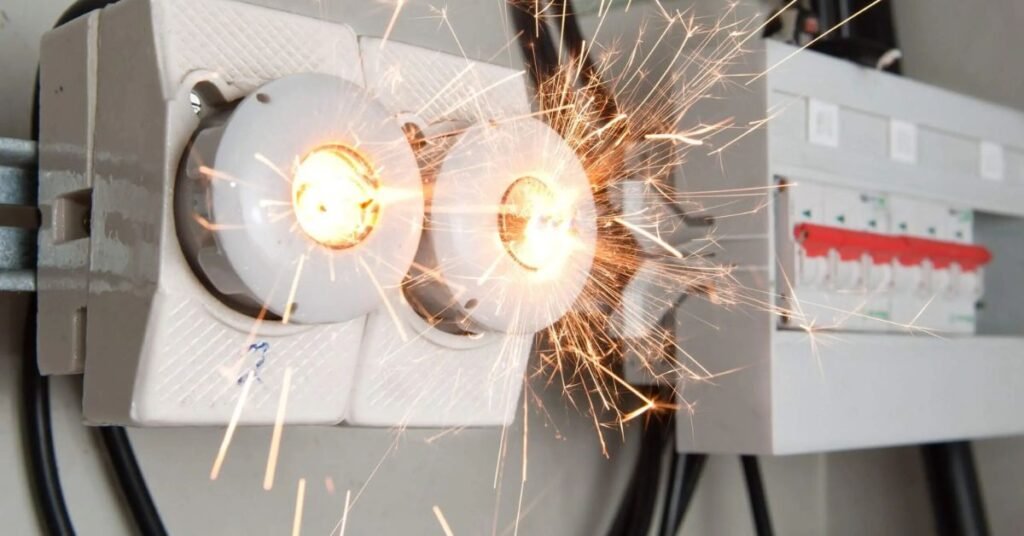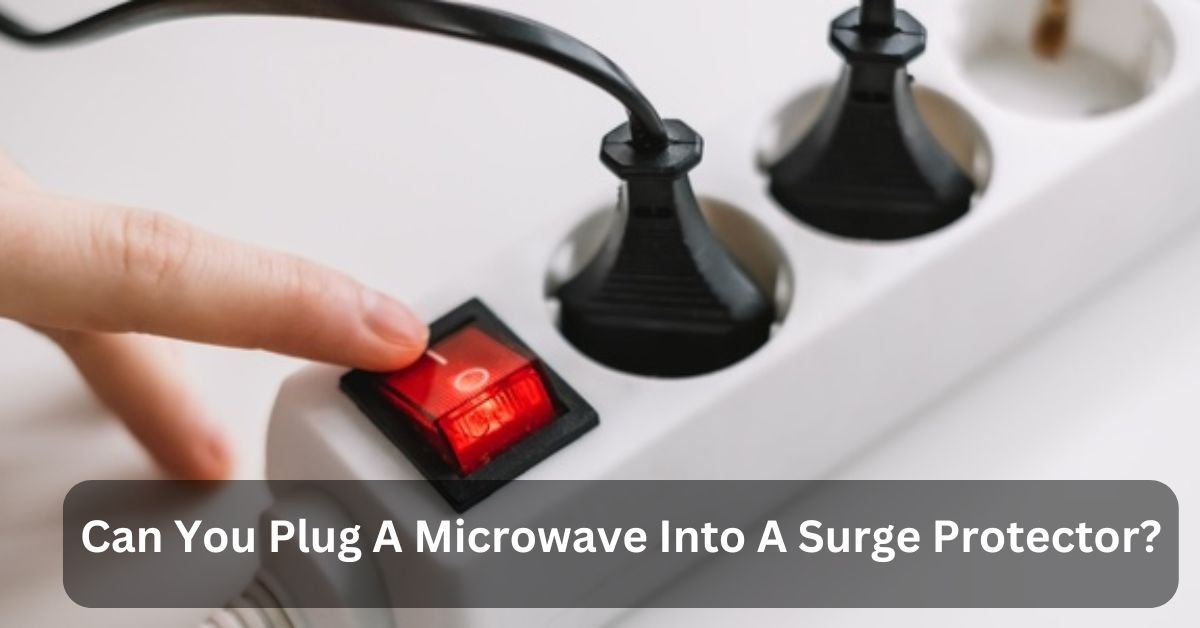Electric-powered domestic devices are essential for making everyday existence available and comfortable in our modern homes. However, ensuring their safety and right utilization is essential for domestic devices. One commonplace question is, can you plug a microwave properly into a surge protector?
Appliances along facet microwaves or area warmers should not be plugged into surge protectors. These home devices want to be plugged into the wall AC socket.
Let’s delve into this subject matter to apprehend its issues and pointers.
Understanding Surge Protectors:
Before diving into specifics, it’s crucial to recognize what surge protectors are and how they are characteristic. Surge protectors are gadgets designed to protect electric domestic devices from unexpected voltage spikes.
These spikes, known as electricity surges, can occur because of lightning moves, strength grid issues, or the operation of massive domestic devices in the same circuit. Surge protectors encounter the spikes and divert greater electricity far from touchy electronics, protecting them from capability damage.
Key Considerations:
When locating whether or no longer to plug a microwave right into a surge protector or without delay right into a wall outlet, right here are the vital issue worries:
1. Power Requirements:
Microwaves generally require a huge quantity of energy to carry out. Most microwave ovens in households draw between seven hundred watts and at least 1,200 watts at some point of cooking. Some larger or more effective models can draw even more.
Surge protectors are normally rated for particular wattages, and it’s crucial to ensure that the surge protector can deal with the strength draw of your microwave without overheating or tripping.
2. Safety Concerns:

Surge protectors are designed to protect digital gadgets from electricity surges, not to deal with sustained immoderate-electricity hundreds like microwaves. Plugging a microwave right into a surge protector that is not rated for its energy draw can doubtlessly result in overheating, melting of the surge protector, or maybe fireplace dangers.
3. Grounding and Outlet Capacity:
Microwaves should be plugged into a nicely grounded outlet that meets or exceeds the microwave’s energy necessities. Ensure the hollow can cope with the load and is kept from too many other home systems that could cause overload or electric-powered problems.
4. Alternative Solutions:
If you need more stores or surge safety near your microwave, consider using a strength strip or surge protector designed for excessive energy appliances. Look for products with a sufficient wattage rating and ensure they have adequate safety functions.
Also Read: Can You Put A Hydro Flask In The Refrigerator?-Complete Guide
Alternatives to Using Surge Protectors:
If you’re looking for alternatives to the use of surge protectors, especially for powering home equipment like microwaves, right here are a few options to keep in mind:
1. Dedicated Circuit:
Install a committed circuit for your microwave. That includes having an electrician create a separate circuit with its breaker in your electric panel. That guarantees that the microwave directly connects to the electrical delivery without sharing it with a special domestic system, decreasing the danger of overload or electric problems.
2. Power Strips with Built-in Surge Protection:

If you need more than one retailer close to your microwave for particular devices, remember to use an energy strip with integrated surge protection rated for higher energy hundreds. Look for energy strips that explicitly are U.S.A. They could cope with the wattage your microwave requires.
3. Extension Cords Designed for Appliances:
Instead of a surge protector, use a heavy-responsibility extension cord specially designed for domestic devices. Make it first-rate for your microwave’s wattage and current draw, and has a grounded plug to ensure safety.
4. Wall Outlet Upgrades:
Upgrade your current wall outlets to ones which might be rated for higher currents and are well grounded. That can offer a more secure and extra strong connection to your microwave.
5. Electrical Panel Inspection:
Have a certified electrician test out your electric panel and wiring to ensure they will deal with the electricity demands of your microwave and another domestic gadget. They can propose any vital enhancements or adjustments to ensure safety and reliability.
Also Read: What Gauge Extension Cord For Microwave?-The Comprehensive Guide
Potential dangers:
When thinking about alternatives to using surge protectors for domestic tools like microwaves, it is important to be aware of ability dangers:
1. Electrical Overload:
Appliances like microwaves draw large quantities of power. If the electric circuit or outlet isn’t rated to address the microwave’s power requirements, it can cause overheating, tripped breakers, or electrical fires.
2. Fire Hazard:
Using inadequate wiring, extension cords, or electricity strips not rated for the microwave’s energy draw can increase the danger of electrical fires, particularly when overheating because of the excessive cutting-edge day passing through.
3. Electrical Code Violations:

Improper setup or use of electrical components not complying with nearby electric codes can pose immoderate protection risks. It may invalidate coverage insurance in case of harm or accidents.
4. Damage to Appliances:
Inadequate safety or energy delivery can damage the equipment, reducing its lifespan or causing it to malfunction.
5. Personal Safety:
Improper electric-powered setups can pose risks of electrical surprise or harm to people within the place.
Safety Tips:
While the usage of a surge protector together with your microwave is generally secure and encouraged, it is important to study the extra safety recommendations:
1. Avoid Daisy-Chaining:
Do not plug more than one surge protector or “daisy chain” them. That can overload the circuit and increase the danger of electrical fires.
2. Inspect Regularly:
Periodically test out each the surge protector and the microwave cord for any symptoms of harm or damage. Replace them immediately if you observe fraying wires, cracked casings, or exclusive troubles.
3. Unplug During Storms:
During thunderstorms or even as the microwave will no longer be used for an extended duration, remember to unplug it from the surge protector to guard against lightning movements or power surges.
Also Read: Are Panda Express Bowls Microwave Safe?-A Complete Guide
FAQ’s:
1. What happens if you plug a microwave properly into a strength strip?
Creating all that warmth calls for a modern-day draw that can cause an energy strip to overheat, likely toasting more than just your bagel.
2. Why is my microwave tripping the surge protector?
Components like the magnetron (the tool that produces microwaves) or the immoderate voltage capacitor might malfunction.
3. Can I use a surge protector for my microwave?
Right here, there is no need to characterize a further surge protector to the street until you genuinely take advantage of this, except if you stay in an area where heavy thunderstorms and lightning are common.
Conclusion:
In the end, at the same time as it is usually secure to plug a microwave right into a surge protector, it is critical to pick the proper type of surge protector and ensure it fits the wattage necessities of your microwave.
By following these recommendations and safety pointers, you can help defend your home system and home from electric damage while taking advantage of the ease of present-day kitchen generation. Stay informed, stay solid, and keep cooking!

